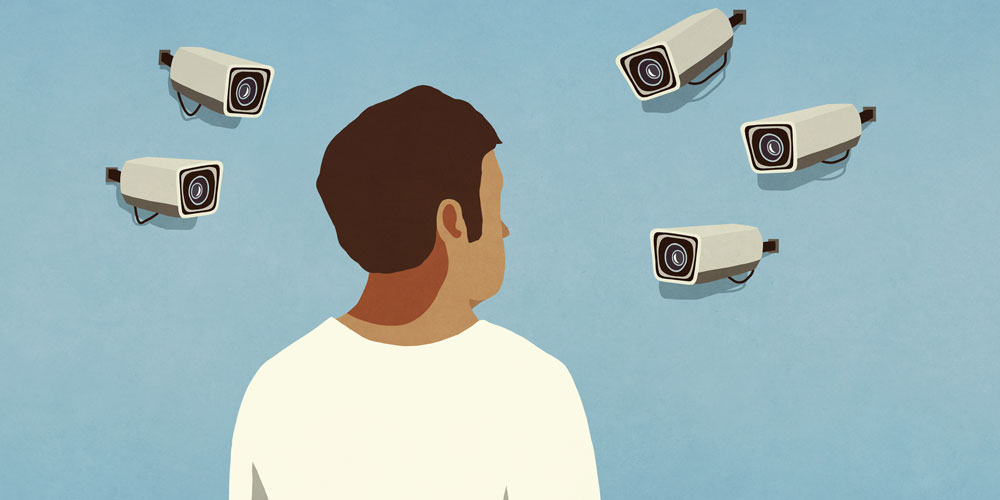Micromanagement is not the answer
Over-monitoring employees can sink productivity and engagement. Here are three better ways to get results.
My late mother, who worked in human resources and customer service into her 70s, was what one now calls an “engaged” employee: never late, sincere in helping resolve problems, and committed to the organization. She never complained and was willing to pull a little more than her weight when called upon. She was as tech savvy as a digital native. Her reviews were consistently stellar.
What ended her working life was not physical or mental limitations. It was not the commute in daunting New England winters. It was a note left on her chair by a supervisor, stating that one of her trips to the restroom had taken too long. Mom explained to me at the time that she was already missing the camaraderie that was her main motivation to continue working, casual chitchat having become all but impossible because of careful employee monitoring. She drew the line at having to rush in the loo.
I thought of this story recently after reading about the growth of “tattleware” to monitor employees, especially those working remotely during the pandemic. These programs track everything from keyboard activity to websites visited. Other versions capture the speed at which warehouse workers pick and pack items. No matter what this software measures, the unmistakable signal from leaders to their employees is one of distrust, which manifests in micromanagement. And micromanagement—a practice that consistently emerges in discussions I facilitate about “bad” leaders—is almost certain to disengage even the most loyal workers.
The reason micromanagement is so detrimental to worker happiness and productivity can be explained in part through self-determination theory, a long-established body of work on human motivation. The theory posits that to feel motivated, people have to fulfill three core needs: competence, autonomy, and relatedness (or being part of a team). Micromanagement cuts against all three of these. Shadowing employees’ every move suggests a lack of faith in their ability to do their job well. It also diminishes their autonomy. And, as in my mother’s case, it destroys relatedness, because each individual feels forced to always concentrate on task completion. Treating people as if they are machines erases any potential for intrinsic motivation and runs counter to the social nature of humans. As Harvard Business School professor Tsedal Neeley told HBS Working Knowledge, “You have to trust that they [workers] are intelligent enough and well-intentioned enough to get work done no matter what it takes.”
What ended my mom’s working life was not physical or mental limitations.... It was a note left on her chair by a supervisor, stating that one of her trips to the restroom had taken too long.
Neuroscience also reveals why micromanaging is counterproductive. Donna Volpitta, an expert in “brain-based mental health literacy,” explained to me that the two most fundamental needs of the human brain are security and autonomy, both of which are built on trust. Leaders who instill a sense of trust in their employees foster that sense of security and autonomy and, in turn, loyalty. When leaders micromanage their employees, they undermine that sense of trust, which tends to breed evasion behaviors in employees. It’s a natural brain response.
“Our brains have two basic operating modes—short-term and long-term,” Volpitta says. “Short-term is about survival. It’s the freeze-flight-fight response or, as I call it, the ‘grasshopper’ brain that is jumping all over. Long-term thinking considers consequences [and] relationships, and is necessary for complex problem solving. It’s the ‘ant’ brain, slower and steadier.” She says micromanagement constantly triggers short-term, survival thinking detrimental to both social interactions and task completion.
Micromanaging gives a manager the illusion of control. Yet it is, indeed, an illusion. The reams of data collected from hyper-observation will not track enthusiasm, commitment, or the satisfaction of either workers or customers. Moves that put people into a defensive, fear-based state create a downward spiral of evading punishment rather than seeking reward. As the cynical old saying goes, “The beatings will continue until morale improves.” It simply will not work.
In my experience, micromanaging derives from predictable causes: managers insecure in their ability to actually manage people, workers insufficiently trained or resourced to do their jobs well, and a reliance on metrics that fail to measure what matters.
I don’t hold managers fully at fault for this situation. It’s still far too easy to complete an MBA without having to take a single course in organizational behavior or psychology. This leaves future leaders unprepared for the challenging reality of uniting and inspiring people to achieve great things together. It’s messy, emotional work, far different than the cool, rational world of numbers and plans.
Here are three antidotes to this trend toward Big Brother management:
Educate yourself about human nature. There is a growing body of knowledge about how humans achieve peak performance, make decisions, and work together. Tap into it. Whether you prefer psychology or neuroscience (and I recommend both), investing in the development of individuals and teams, fostering psychological safety, learning how the brain responds to different stimuli, and treating people as fully capable adults have been shown to yield significant dividends.
Do the hard work of building soft skills. If you expect to lead, you have to be comfortable around people. It doesn’t come naturally to everyone. Start by asking your people questions: How can I make it easier for you to succeed? How do you think we can do better? What makes a day at work “great” for you? An open dialogue with team members, one that assumes an abundance, not a scarcity, of insight and wisdom, will help build your skills and overall team performance.
Strive for clarity around the mission as well as the metrics. It can be easy to take the larger mission for granted while obsessing over minute-by-minute measurements. Remind your employees why what they do is important and how it’s improving people’s lives. There’s no better way to ensure that people are doing the right thing when no one is looking than to connect them deeply to the mission.
There was a time when organizational work was defined as people assigned to company-supplied equipment performing designated duties to produce standardized outputs. Rachel Happe, founder of organizational consulting firm Engaged Organizations, says that management in those days tended to be focused on task completion with interchangeable employees. Eventually, that focus turned to individuals and the application of specialized skills and unique outputs. Now, with many rote activities having been automated, individual skills and expertise are no longer sufficient to address complex challenges. Employees add the greatest value through coordination, collaboration, and creativity. In these conditions, management is about creating the conditions in which individuals thrive, by fostering communities of workers who connect with, support, and challenge each other. “In these settings, the best work emerges through self-organization, psychological safety, and relationships,” Happe says. “With the rapid pace of technology, work has evolved faster than organizations and management practice. Managers must attend to the system and its governance.”
To survive the “great resignation” and succeed beyond it, leaders need to speed their own evolution. Doing so calls for their own great reassessment, so they can create organizations that attract and retain people who, like my mom, are ready to achieve great things if only their managers will trust them to do it.




